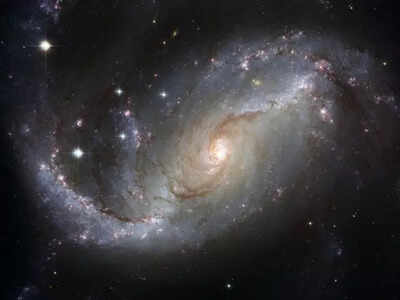WASHINGTON: Astronomers have yet to detect the most passionate signs of potential bio -scorch outside the solar system, though they are cautious.
Using data from James Webspace telescope (JWST), headed by astronomer, University of Cambridge, has detected chemical fingerprints of Damithail Sulfide (DMS) and/or Demotel Dusselfide (DMDS). Explinate K2-18bWho walks around his star in the residence zone.
On earth, DMS and DMDs are manufactured only through life, mainly microbial life such as marine phytoplanicon.
Although an unknown chemical process can be the source of these molecules in the K2-18B environment, the results are the strongest evidence that life can be available on a planet outside our solar system.
Observations have reached the ‘Three Sigma’ level of the importance of statistics-that is, it has a 0.3 % possibility that it has been coincidentally.
To reach the accepted ranking for scientific discovery, the observations will have to cross the door of five Sigma, which means that it will have less than 0.00006 % likely to come.
Researchers say a follow -up with JWST can help them reach the importance of significant five Sigma between 16 and 24 hours.
Their results are reported in astronomical journal letters.
The first observations of the K2-18B-which is 8.6 times larger and 2.6 times higher and 2.6 times higher than the earth and is 124 light years away in Liu’s tower, identified in the environment of methane and carbon dioxide.
It was the first time that carbon -based molecules were discovered in an expatriate environment in the residence zone. These results were in accordance with the ‘Haisen’ planet’s predictions: a world -laden sea -covering world below the hydrogen -rich environment.
However, another, the weak signal indicated the possibility of something else on K2-18B.
“We did not know with certainty whether the signal we had the last time was due to the DMS, but it was just interesting enough for us to take another look using a different device with JWST,” said Nikko Madhushan, a professor at the Cambridge Institute of Astronomy, who led this research.
To determine the chemical composition of the environment of remote planets, astronomers analyze the light from their parents’ stars as soon as the planet is transferred, or passes through the Earth’s visible star.
As a K2-18B transit, JWST can detect a decrease in dark brightness, and a small part of the star’s light goes through the planet’s atmosphere before reaching Earth.
In the planet environment, some star light absorption addresses in the wandering spectrum that astronomers can collide together to determine the gases of the components of the environment of the acne.
Earlier, the DMS was temporarily indicated using JWST’s nears (nearest infrared and slateless spectrographs) and neurice spectacle (near infrared spectrograph) devices, which combined with the extent of infrared (0.8-5 microns) to a close wave.
In the new, independent observation, the mid-infrared (6-12 micron) range used JWST’s (middle infrared device).
“This is an independent line of evidence, which we have already used different tools and has a different wavelength limit of light, where there is no overlap with previous observations,” “The signal came strong and clean.”
“It was a wonderful feeling to emerge,” said Mans Hallmang, a researcher at the Space Telescope Science Institute in Baltimore in the United States, and remains permanent in wider independent analysis and strength tests. “
DMS and DMDs are the same chemical family molecules, and both predicted Biosychen.
Subscribe to Updates
Get the latest creative news from FooBar about art, design and business.
Related Posts
Add A Comment



